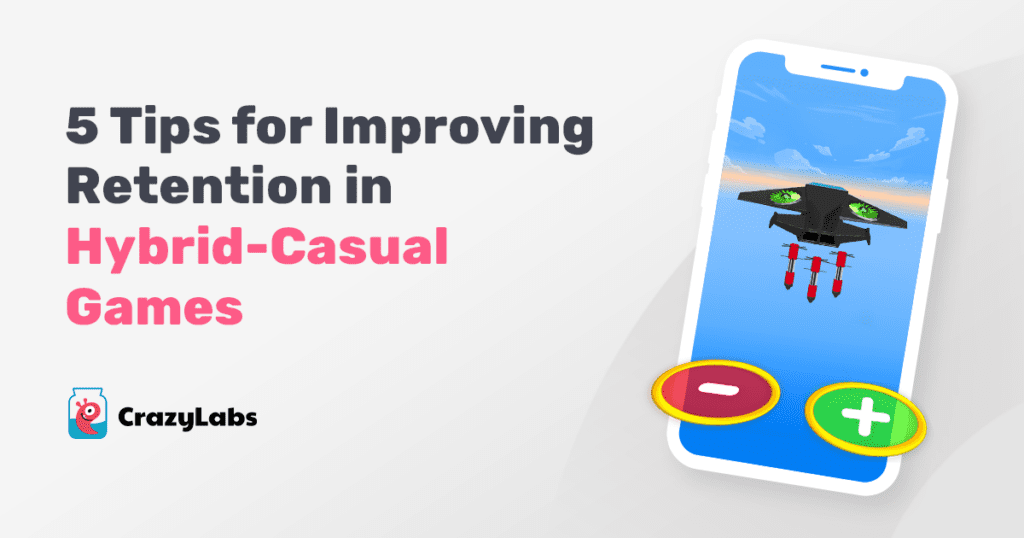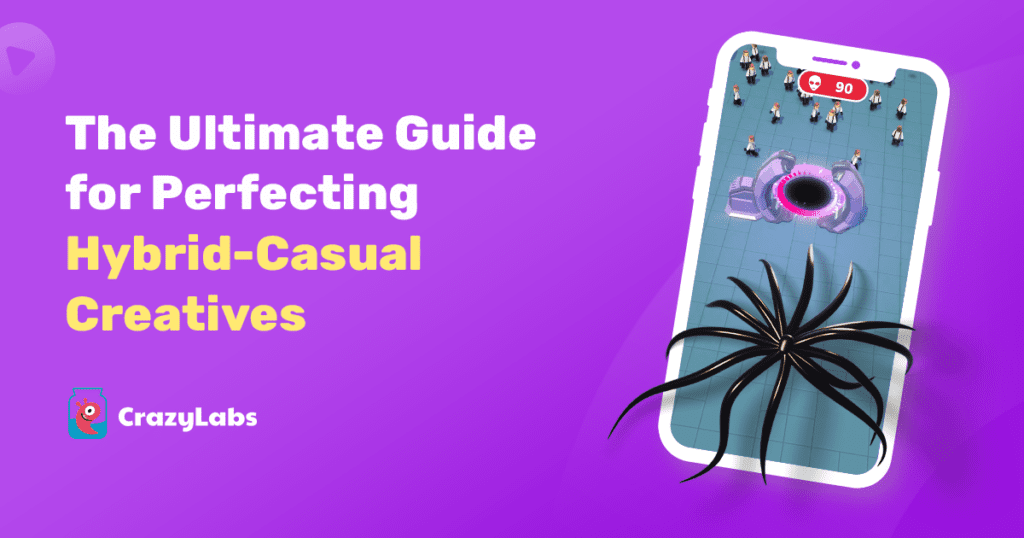The lifetime value (LTV) of a player is a critical metric that tracks the revenue generated by a user throughout their entire engagement with a game. User engagement and monetization are closely intertwined.
This connection arises from the fact that maximizing user engagement eventually leads to higher player retention. This, in turn, can expose players to more content.
More importantly, it highlights crucial points within the game (e.g., in-game virtual goods, the game economy, boosters, etc.) where players perceive value and are willing to invest money for upgrades or watch rewarded videos (RVs).
However, creating these crucial points require a thorough analysis of the game’s core mechanics to ensure they are infinitely replicable. Once a replayable core is established, it becomes the foundation for defining strategic steps towards optimization.
Improving LTV necessitates a strategic approach that focuses on optimizing both user engagement and monetization strategies. Below, we share our best practices for improving engagement and monetization to ultimately boost your mobile game’s LTV.
Improving Engagement
Clear objective and progression: Establishing a clear objective and progression is incredibly important, and must be reflected in the video, storefront, and initial levels. This is because ensuring utmost clarity helps reduce the possibility of misunderstandings and potential loss of player interest. This becomes especially crucial in hyper-casual games, where appealing to a broad audience is a priority.
In the example video below, it’s clear that the Bomb Evolution game’s primary goal is to destroy the city using bombs.
Replayable core: The game should provide an enjoyable, challenging, and replayable core experience. This is where the game designer needs to experiment to ultimately discover the most captivating mechanics that can entice players to keep playing.
CrazyLabs’ Multi Maze game is a fantastic example given its challenging and replayable nature. It provides players with a sense of choice within the maze, allowing them to select the path for the balls through the multiplying gates. This design offers players both a challenge and a thrilling sense of anticipation. The player can ask themselves, “Will I accumulate enough points to successfully complete this level”?
Pro tip – create an extra challenge: This introduces an additional layer of challenge alongside the existing gameplay loop, serving as an effective method to deepen player immersion and sustain engagement. In the video below, showcasing our game Bomb Evolution, you’ll find a special ‘boss level’ feature. This unique level emerges every few stages, introducing an added challenge of targeting both the enemies and the monster (dinosaur, gorilla, etc.), giving the player an opportunity to ‘show off’ their skills within the game.
Upgrade system: An upgrade system in hyper-casual games typically refers to a gameplay mechanic where players can improve their in-game elements like characters, abilities, or features using various resources or in-game currency. This system is designed to engage players by providing them with feelings of progression, control and achievement as they advance through the game.
Pro tip – add a surprise element: At times, after you’ve established clear objectives and progressions, you can add a surprise element. In other words, instead of showing the players exactly what the next upgrade is, show a question mark, gift box, or something similar. This can add to the engagement of players, but only after the first few progressions-based upgrades were proved useful (e.g. once you’ve established trust).
Sense of accomplishment: By fostering a sense of accomplishment in players, it motivates them to continue playing the game, reinforcing their commitment to improve their skills within the game. This can be likened to a rewarding system, evident in unlocking fresh content, acquiring in-game currency, or obtaining desired items upon reaching certain milestones.
A great example that illustrates this is in Dig Deep, where players can choose to use their mined balls to build a monument rather than converting them into coins. It takes a large quantity of balls to complete a monument, but the payoff is worth it.
Once the monument is complete, the balls mined from the hole closest to it are worth TEN TIMES MORE COINS, and this change lasts forever. Completing the monument after investing significant time and effort and receiving such a substantial reward evokes a wonderful sense of accomplishment. In addition, it makes the player’s experience smoother as they keep playing and accumulating revenue significantly faster.
Meta game: Meta game essentially build on the basic gameplay to provide players with additional objectives, rewards, and challenges. The meta game can include features such as progression systems, in-game economies, which encourage players to continue playing and interacting with the game beyond the initial gameplay. By incorporating these elements, players are offered a more engaging and compelling gaming experience.
In Mystical Mixing, players can construct structures on the game’s map. These structures provide a steady supply of resources, which can then be used to build additional buildings and upgrade the ones they already have.
Strategies for Monetizing Your Mobile Game
Leverage rewarded videos (RVs): Rewarded video ads serve as a remarkably potent tool for monetizing hyper-casual and hybrid games. These video ads provide players with in-game rewards for watching, which can range from in-game currency and power-ups to other benefits. By incentivizing players to watch these ads, you can boost the view count & ad revenue, aid players in advancing more quickly, and empower them to unlock premium content.
Furthermore, rewarded video ads prove effective in retaining players who may have considered leaving the game due to challenges in a level or other factors. This effectiveness contributes to increased playtime and enhanced player engagement.
Below are two tips from CrazyLabs’ Head of Product:
- Guide users toward paying opportunities: Watching a RV is similar to making an in-app purchase (IAP). Users’ time is valuable, and establishing the right in-game economy is crucial. A game should genuinely justify the rewards users receive from watching RVs, ensuring a compelling incentive for them to do so. This could include offering unique content such as bonus levels or skins, or even time-saving benefits (e.g., a 30-second RV providing resources equivalent to 5 minutes of playing).
- Ensure proper UI/UX design: Accurate UI/UX design is essential to prevent user confusion. Misleading users can initially lead to a surge in RV impressions on day 0, but this might result in significant drops later. Such a scenario not only conflicts with store policies but could also harm the game’s long-term potential. When crafting RV experiences, maintain a balance between clear indications that it’s an RV and an appealing, distinctive appearance that captures users’ attention and curiosity.
A/B test ad interval and ad location: A/B testing allows you to experiment to find the optimal mix of ad intervals and ad locations that maximizes revenue without compromising user experience.
When the goal is to maximize monetization, one of the first things that you need to test is the ad interval and ad location to find the sweet spot. For example, when is the first time that a player sees the first ad? Will it be in the first or second level? Is it going to be at the beginning or end of the level? Carefully consider ad placement and timing to avoid disrupting gameplay flow.
Here are two tips from CrazyLabs’ Lead Game Designer:
- Consider the player’s state of mind before offering an RV: Try to avoid placing ads right before you present players with a locked RV feature or a booster. Players are less likely to engage with an RV ad if they have just watched and closed an interstitial ad.
- Remember to test intervals between different types of ads: When determining ad intervals, it’s important to consider the time gap between RV ads and the subsequent interstitial ad. Having players watch a full 30-second RV ad, then immediately encountering an interstitial ad just 5 seconds after returning to the game, can lead to frustration and may cause players to churn.
The constant challenge lies in striking a delicate balance between engaging players to keep them coming back for more and effectively monetizing the user base. By applying the strategies mentioned above you have an increased chance of bolstering your game’s LTV.


